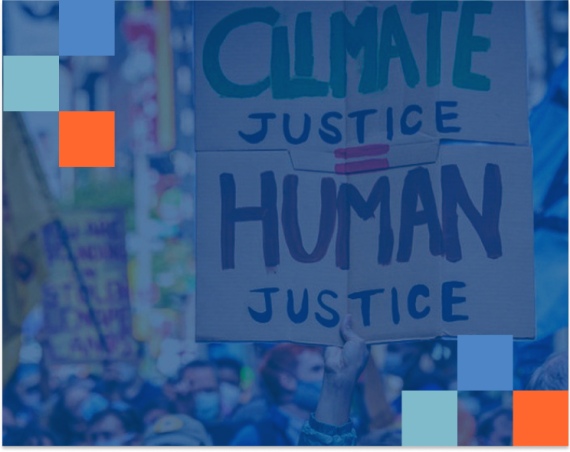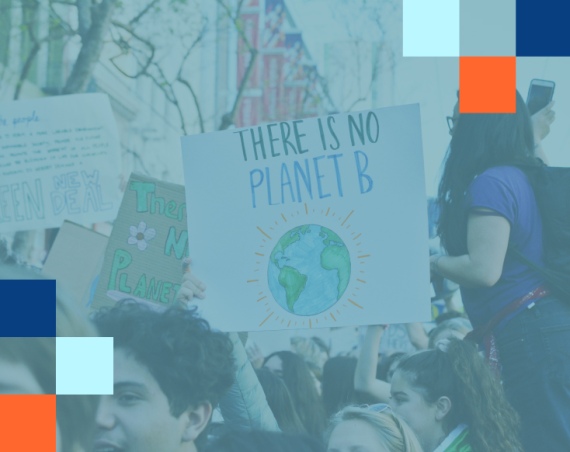The nature of climate issues is complex and multi-faceted. As a result, when creating climate action plans local governments and organizations need to engage diverse stakeholders in consistent and transparent ways to identify tangible and actionable solutions. For this to succeed, communities need the opportunity to voice concerns, weigh on policy changes, suggest ideas for local action, and debate how they want to tackle climate change together.
For an issue as big as climate change, proper contextualization and facilitated discussions can help create clearer paths to engagement. Luckily, despite the pandemic’s limitations on in-person deliberation, this type of engagement can move forward through virtual workshops that enable productive, online engagement between governments and their communities.
If you’re considering hosting an online workshop to engage your residents and stakeholders on climate action, here are seven concrete steps you can take:
Before your climate action planning workshop
1. Identify stakeholders and map them
The very first step – and an important one – is identifying and mapping the stakeholders in your local community who should be part of the process. Climate issues are typically complex, multi-scale, and affect multiple stakeholders and agencies. Depending on your community, you could need to engage farmers’ associations, private industry associations, civic organizations, local government departments, and even academic institutions.
Understanding the issues each stakeholder (or group of stakeholders) is interested in, and their underlying values in those issues, is key to productive collaboration. With this information, you can decide who to invite, and which stakeholders should be grouped in break-out discussions.
2. Prepare for your workshop
As a workshop facilitator, it is your responsibility to create a virtual environment that cultivates a productive discussion – and that means solid preparation. Start by scripting and developing the format and timeline of your workshop; from how the introduction will be done, what tools to use in the brainstorming session, and how main ideas will be chosen.
It usually takes more than one person to hold a virtual workshop like this – so assign roles such as timekeeper, notetaker, document provider, or even dedicated IT person in larger workshops. Of course – practice a full session ahead of time to familiarize yourself with the tool.
Pro Tip: CitizenLab workshop’s tool helps you set up timelines ahead of the workshop. By filling in information for each phase of the workshop ahead of time, your stakeholders will easily understand what to do at each phase, and you can more easily glide through the stages of your workshop.
During your climate action planning workshop
3. Start your workshop by framing the issue
Since climate issues can be contentious, you’ll need proper framing of the problem, boundaries, and criteria of what to discuss (and more specifically, what NOT to discuss) to set up a successful workshop. You can pin these descriptions and criteria on the information board or within your session’s chatbox.
For complex or contentious issues, also consider sending materials ahead of the workshop for stakeholders to familiarize themselves with the topic and project parameters.
4. Keep it simple and engaging
Kick off your issue identification session by placing five to six stakeholders in each breakout room to ensure a dynamic, yet manageable, session. Stakeholders can present the issues that they believe are important for the community.
Facilitators may allow different input formats, such as text inputs or voting, with the goal of including all stakeholders in the process. Using features such as a countdown timer can help you manage time, and speaker stats can help you steer clear of the “loudest voices in the room” dominating the whole session.
5. Collect ideas and discuss
The next step is to organize all the different climate issues that have been proposed and categorize them. Then, each issue or group of issues can be discussed further to identify opportunities and challenges and prioritize action based on your set criteria.
If you find yourself overwhelmed with the amount of input, facilitators can use features such as voting or polling to identify the issues that are top of mind for the community and more easily prioritize what to focus on.
6. Summarize and wrap up
All productive workshops end with a nice summary of what has been discussed, agreed upon, and what will happen next. A nice way to wrap this up could include each breakout room writing down their key takeaways and bringing them to the larger group for discussion, or having the larger group write a summary together.
After your climate action planning workshop
7. Follow-up
Identifying which climate issues are important for your community is a crucial initial step in addressing them. Regularly updating stakeholders with progress during the implementation process, and following up on changes in the process, can help you build a more sustainable, engaging, and inclusive community.
Having strong feedback loops in place can also encourage participants to engage again since they’ll see how their involvement has had a direct impact.
Community workshops for climate action
Using synchronous workshops to complement asynchronous community engagement can help guide conversations on some of the hardest issues communities face, including climate change, in productive and action-oriented ways.






